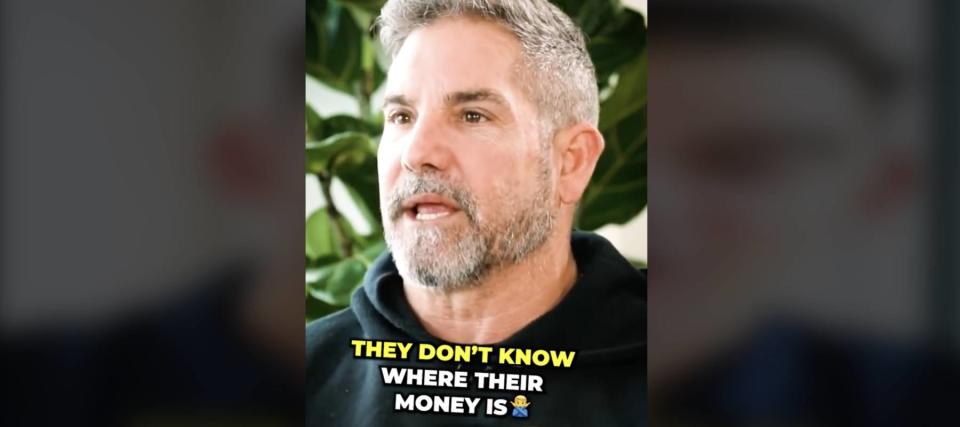Grant Cardone thinks you should look at your cash and investing accounts every single day — here's why

Is the average American investor getting scammed? Real estate mogul Grant Cardone believes they are.
“You get money, you work your a– off and then you give it to an institution and forget that it’s there,” he said during an interview with podcast host Lewis Howes. “Wells Fargo is paying you nothing, Bank of America is paying you nothing. You send it to Chase, they're not paying you anything.”
Don't miss
Commercial real estate has beaten the stock market for 25 years — but only the super rich could buy in. Here's how even ordinary investors can become the landlord of Walmart, Whole Foods or Kroger
Cost-of-living in America is still out of control — use these 3 'real assets' to protect your wealth today, no matter what the US Fed does or says
These 5 magic money moves will boost you up America's net worth ladder in 2024 — and you can complete each step within minutes. Here's how
But is Cardone right — is there evidence to suggest that savers are getting a bad deal?
Are savers getting the short end of the stick?
The interest rate on deposits held at major banks is nearly 0%. Wells Fargo, Chase and Bank of America offer entry-level rates of 0.01% on these deposits.
Given that the Federal Reserve’s benchmark interest rates are between 5.25% and 5.50%, bank deposit rates certainly appear like a bad deal.
A survey of 8.3 million Chase customers by JP Morgan found that the median cash balance in a checking account was around $6,600 depending on income bracket, as of February 2024. That’s a lot of money in aggregate that isn’t earning much interest.
To be fair, these checking accounts are not designed for capital appreciation. Account holders generally use this cash for daily transactions and short-term needs, such as rent and utilities.
High-yield savings accounts currently offer interest rates as high as 5.3% in some instances, according to data from Bankrate.
However, Cardone argued that people are either unaware of better rates or unwilling to go seek them out. “People are unconscious, they don’t know where their money is,” he told Howes.
His suggestion is to closely monitor your wealth and assets.
Read more: Car insurance rates have spiked in the US to a stunning $2,150/year — but you can be smarter than that. Here's how you can save yourself as much as $820 annually in minutes (it's 100% free)
Personal inventory
Cardone said he looks at his cash and investments “every single day.” This helps him take “personal inventory” of where all his money is and what it’s doing. He believes this habit is “non-negotiable” for anyone looking to build wealth.
“If [your account] is zero, look at it until it makes you sick,” he said.
Cardone’s financial philosophy echoes the words of management consultant Peter Drucker, who once said, “You can't manage what you can't measure.”
It’s a philosophy that’s baked into modern corporations and professional investment strategies, as they prepare quarterly reports on all their cash flow, assets, liabilities, income and expenses.
Frequently checking your bank account could help you get a better grip on your personal spending habits and cash flow. The next step is to control your cash flow, minimize expenses and start deploying excess cash into investments that will hopefully appreciate over time.
If you invested $1,000 in a high-yield savings account last year at 5% interest it could have generated an extra $50. However, if it was invested in an index fund that tracks the S&P 500, you could have generated $262 over the past 12 months. Over time, these small gains can add up and make a big difference.
What to read next
Rich young Americans have lost confidence in the stock market — and are betting on these assets instead. Get in now for strong long-term tailwinds
Car insurance premiums in America are through the roof — and only getting worse. But 5 minutes could have you paying as little as $29/month
Stop crushing your retirement dreams with wealth-killing costs and headaches — here are 10 'must-haves' when choosing a trading platform (and 1 option that has them all)
This article provides information only and should not be construed as advice. It is provided without warranty of any kind.

 Yahoo Finance
Yahoo Finance 